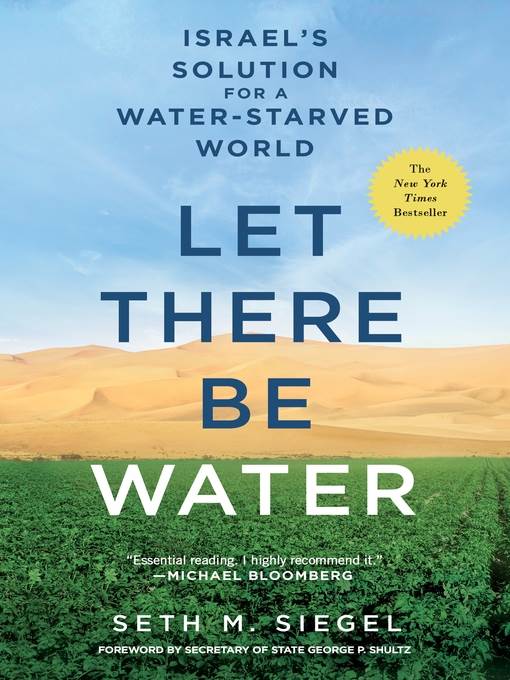
Let There Be Water
Israel's Solution for a Water-Starved World
کتاب های مرتبط
- اطلاعات
- نقد و بررسی
- دیدگاه کاربران
نقد و بررسی

September 15, 2015
Lawyer and activist Siegel believes a global fresh water crisis is looming owing to climate change, population growth, pollution and an expanding middle class. Yet, Israel, entirely desert or semiarid land with an increasing population, is able to feed itself and export food and water. The author spends most of the book explaining how the country achieved this feat. He outlines the sacrifice and planning of the early decades, then the development of home-grown technology. For example, all citizens are taught to conserve, the state owns all fresh water and charges for it, and drip irrigation was invented there. Farmers have chosen and bred crops that can survive in a dry environment with brackish water. Reclamation is also a factor: most of the wastewater is treated and held in reservoirs for use in irrigation. Desalination plants have become important components of the water surplus and allow Israel to supply Jordan and the Palestinian Authority. The state supports water technology research which helps generate revenue for export. Other nations acknowledge this expertise by hiring Israeli consultants to deal with water issues. VERDICT With current drought conditions across Western North America, this hard-won water wisdom should be of interest to concerned readers.--David R. Conn, formerly with Surrey Libs., BC
Copyright 2015 Library Journal, LLC Used with permission.

Starred review from August 1, 2015
An in-depth report on how Israel has combined technological innovation with conservation to achieve a water surplus at home and become a world leader in water management."Until recently," writes lawyer and activist Siegel, "nearly all of Israel's overseas water projects took place in economically distressed or underdeveloped locations." Now, however, its "global water footprint [has grown] to include "providing water solutions in wealthy countries and communities," including California. "Israeli innovations touch almost every part of the water profile," writes the author, and they include drip irrigation, desalination, water purification, and recycled sewage. Since its formation in 1948, Israel has sustained a tenfold increase in population despite the fact that 60 percent of its territory is desert and the rest semiarid. In order to cultivate sufficient food, the first step was to transport fresh water to farms for irrigation. Traditional methods, such as channeling water through fields (flood irrigation) or even spraying crops directly, were too wasteful. To address these challenges, Israeli water engineer Simcha Blass developed a water-delivery system that dripped precisely the needed amount to the roots of plants despite variations in the terrain, water pressure, and weather. But it took until the 1960s to find a collective farm willing to manufacture the equipment and test the process. The next step involved the development of a fine-grained filtration membrane, created using nanotechnology, to filter impurities from brackish water collected in aquifers. This allowed the recovery of water trapped beneath the sands and ultimately to successful desalination of seawater. The ability to purify and recycle sewage followed. Only in the first years of the new century-buttressed by a national commitment to conservation-has Israel achieved abundance. The author concludes this fascinating account with the contention that the Israeli experience provides a model for dealing with the global challenge of climate change. A major contribution to this hotly debated issue and to broader questions of environmental policy.
COPYRIGHT(2015) Kirkus Reviews, ALL RIGHTS RESERVED.

























دیدگاه کاربران